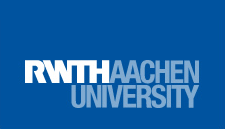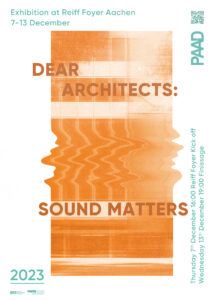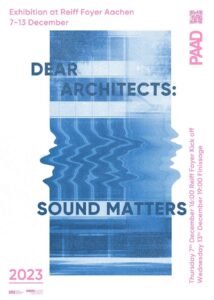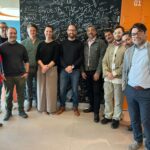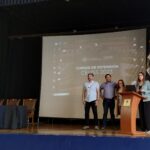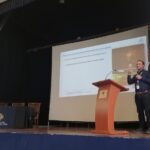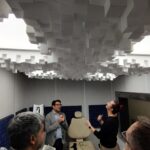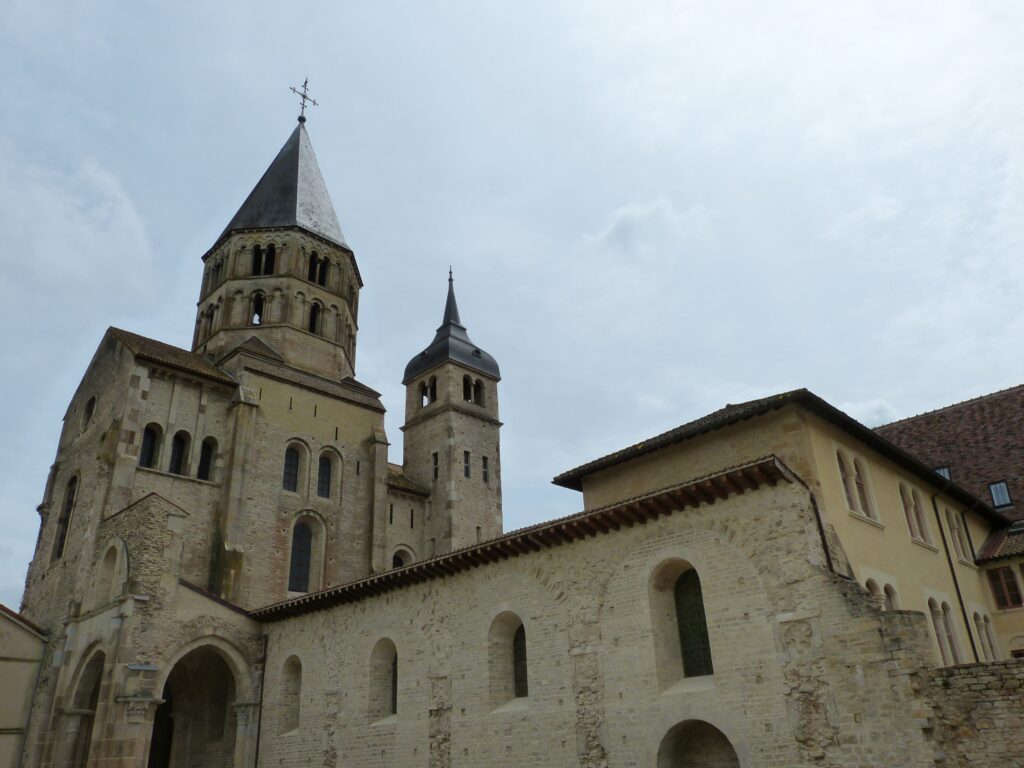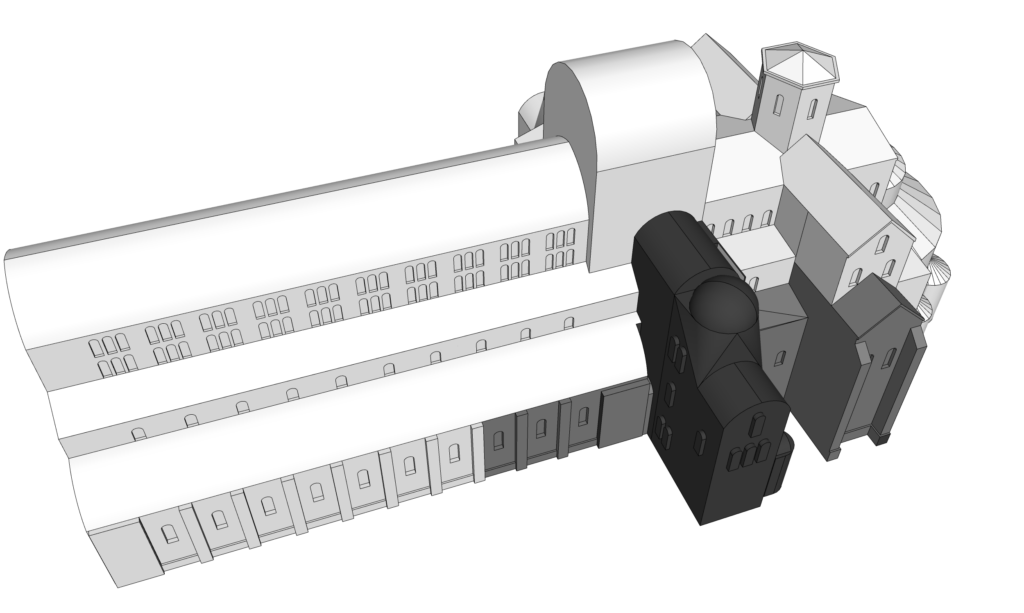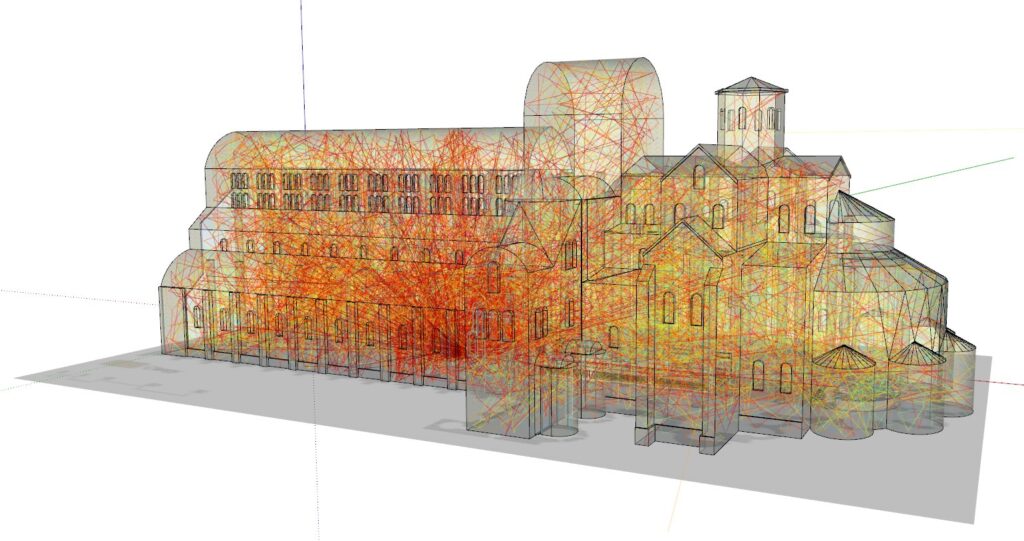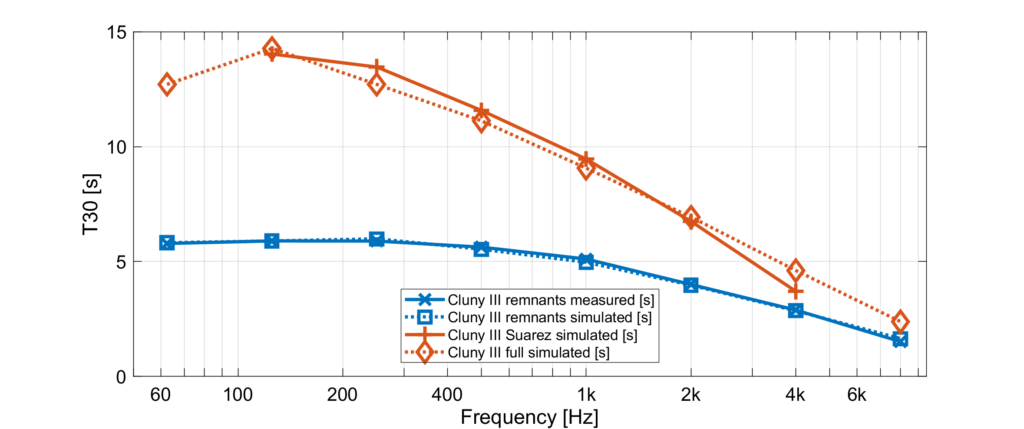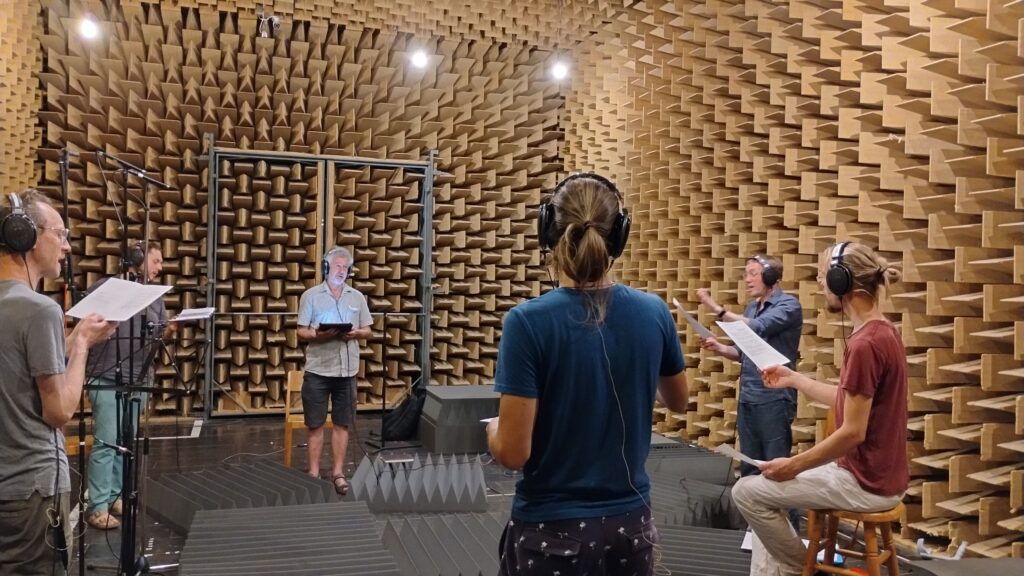Kategorie: ‘Acoustic simulation’
New exhibition DEAR ARCHITECTS: SOUND MATTERS
How often do you think about sound? How do you want people to feel when you are designing a space? Good acoustics design is inherent to architecture. Every decision you make about shape, form, geometry, volume and materials defines the acoustics. So how do you design proactively for the right outcomes, the first time?
With the comprehensive exhibition DEAR ARCHITECTS: SOUND MATTERS we want to link the field of acoustics more with that of architects. We show how acoustics are integrated into the design process and how auralization and simulation tools make it possible to experience acoustics at an early stage.
The exhibition is organized by the PAAD group in collaboration with the Design Computation chair at the RWTH.
Place: Reiff Foyer of the Faculty of Architecture, RWTH Aachen University, Schinkelstraße 1, 52062 Aachen
Dates: 7-13 December
Finissage: 13th December at 19h
Contact person: Josep Llorca-Bofí, josep.llorca@akustik.rwth-aachen.de
Research trip to Santiago de Chile
From October 10th to October 13th 2023, Lukas Aspöck participated in the workshop “Digital transformation in the development of rehabilitation sciences: the current challenge to use state-of-the-art technology” on behalf of the Institute for Hearing Technology and Acoustics.
The workshop was held in Santiago de Chile and Valparaíso and was mainly hosted and organized by the Universidad San Sebastián. The program included many interesting presentations by national and international researchers related to machine learning, virtual reality and the development of sensors and tools which can be applied within different fields of rehabilitation and related research. As part of the workshop, the researchers also visited various facilities, ranging from laboratories and workshops for speech therapy and audiology to a healthcare unit for physical rehabilitation and the research and technology transfer center AC3E of the Federico Santa María Technical University.
- Visit at the AC3E research center, Valparaiso Photo: Sandra Rojas
- The organisation team of the event Photo: Lukas Aspöck
- Lukas during his presentation Photo: Rhoddy Viveros
- Speech lab in AC3E center in Valparaiso Photo: Lukas Aspöck
Lukas contributed to the event by giving a 60-minute presentation with the topic “Virtual reality environments for research in acoustics and audiology”. The slides of this presentation are available here.
Many thanks to our former colleague Rhoddy Viveros for the organization and the invitation to this event. Thanks also to the rest of the organization team, which was led by Carla Contreras and also included Sandra Rojas, Matías Zañartu and Cristhian Mendoza. The event was funded by the Chilean National Research and Development Agency (International Linkage FOVI220126).
Jahrestagung der Gesellschaft für Musikforschung 2023
Im Rahmen der Jahrestagung der Gesellschaft für Musikforschung 2023 in Saarbrücken fand am 5. Oktober 2023 ein Marktplatz aktueller Forschung statt, in der Methoden und Werkzeuge für die digitale Musikforschung präsentiert werden konnten. Im Zuge der Zusammenarbeit mit Prof. Stefan Morent von der Universität im Projekt „Sacred Sound – Sacred Space“ demonstrierten unsere Mitarbeitenden Carolin Breuer und Pascal Palenda die Möglichkeiten, Räume akustische zu simulieren und auralisieren, in virtuelle Räume hinzusingen oder zu musizieren, sowie Räume in der Virtuellen Realität mit Hilfe eines Head-Mounted-Displays interaktiv akustisch-visuell erlebbar zu machen.
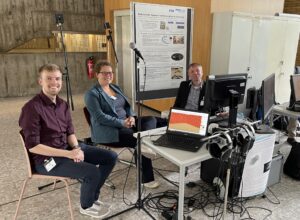
Stand bei der Jahrestagung für Musikforschung. Foto: Martin Albrecht-Hohmaier
New VA Release: Version 2023a
Sacred Sound: The acoustic reconstruction of no longer existing spaces
The project Sacred Sound – Sacred Space, led by musicologist Prof. Stefan Morent of the University of Tübingen, deals with the acoustics of sacred spaces as they existed and were used many centuries ago. In cooperation with IHTA, this project uses simulations to reconstruct, for example, the acoustics of the abbey church of Cluny III in order to auralize the liturgical chants of the medieval monks. Cluny III existed between 1130 and 1790 and was the largest church in the world until the construction of St. Peter’s Basilica in Rome.
Based on the room acoustic simulations, medieval choir chants were performed and recorded in IHTA’s laboratories by the ensemble Ordo Virtutum. During the recordings, the singers were presented with the reflections of the virtually reconstructed church space in real time. In further steps of the project these recordings will be analyzed musicologically in order to investigate the influence of the architecture on the musical performance.
Parts of the project were recently documented by the SWR in a radio (116 min.) and a TV report (20 min; both in German language).
- Remnants of Cluny III (Foto: CC0, pxhere.com)
- 3d model of cluny III. Black and dark grey parts show the still existing remnants of the church (Picture: Lukas Aspöck, CC-BY 4.0)
- Ray Tracing simulation in the acoustic 3d model of Cluny III (Picture: Lukas Aspöck, CC-BY 4.0).
- Simulated (and measured) reverberation times for the remnants and the full church (Picture: Lukas Aspöck, CC-BY 4.0).
- Ensemble Ordo Virtutum during the recording session at the hemi anechoic chamber at the Institute (Picture: Lukas Aspöck, CC-BY 4.0).
Thanks for everyone at IHTA who supported this project. Thanks also to the Visual Computing Institute for helping out with the aixCAVE system and to the company Sennheiser for providing microphones for the recording sessions!
The ITA-Toolbox COMSOL interface
Acoustic simulations become a more and more important toolset for industry and research. For a few years now, our institute uses COMSOL Multiphysics for numerical simulations, e.g. FEM and BEM, in various fields of acoustics. For proper processing of simulation results, we usually rely on MATLAB and the ITA-Toolbox. Although COMSOL provides a MATLAB interface (LiveLink), using this for advanced processing is not straightforward. With this in mind, a user-friendly interface between the ITA-Toolbox and COMSOL was designed.
 Key features
Key features
- Starting the COMSOL server and connecting Matlab
- A rich class structure representing a COMSOL model and its model nodes (geometry, physics, …)
- Evaluation of FEM / BEM results at arbitrary points using the itaResult format without writing the results to hard disk
- Quickly applying complex-valued, frequency-dependent data to COMSOL model (itaResult -> COMSOL interpolation)
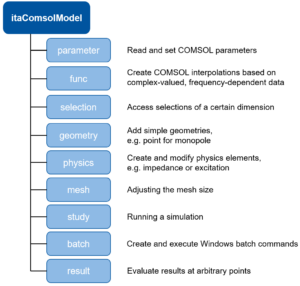
Class structure of the ITA-Toolbox COMSOL interface
The class structure makes the usage of this interface intuitive and easily extendable. Similar to the actual COMSOL model, the itaComsolModel class contains nodes representing the geometry, physics, study and so on. Each node comes with functions to interact with the respective node. However, the current toolset also allows applying significant changes your model using a single line of Matlab code. For example, the user can apply a user-defined impedance to a pre-defined boundary selection or create a monopole source with a user-defined frequency response. In this case, multiple of those nodes are modified (e.g. geometry and physics).
If you are interested, the interface is part of the ITA-Toolbox, that can be downloaded or cloned from our Git repository. The related files can be found in the folder “ITA-Toolbox\applications\SoundFieldSimulation\Comsol\”. This also contains a set of small demos for getting started.
